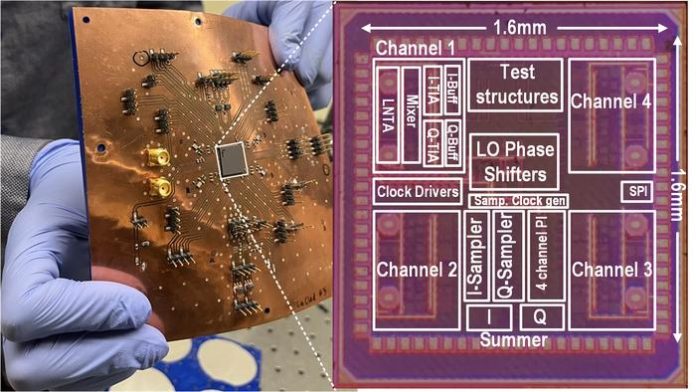
Washington State University researchers unveiled 3D-printed antenna arrays with a chip-scale processor, a major breakthrough for flexible wireless systems.
This innovation promises lighter, more stable communication for smart textiles, drones, and aircraft by correcting signal errors in real time
Researchers from Washington State University (WSU) have achieved a significant milestone in flexible electronics by developing 3D-printed antenna arrays coupled with a new chip-sized processor. This innovation could revolutionize various industries by enabling more robust, flexible, and high-performance wearable and “antenna-in-structure” wireless systems.
Published in the journal Nature Communications, this proof-of-concept prototype addresses long-standing performance and cost challenges associated with flexible antenna technology, positioning it as a key development for future communications in aviation, automotive, and space applications.
Overcoming limitations of flexible antennas
Traditional flexible wireless systems have historically struggled with high manufacturing costs and signal instability. When bent, moved, or subjected to environmental stressors like temperature and vibration—common in wearable electronics or vibrating aircraft wings—these antennas would change shape, leading to significant signal errors. This instability has limited their widespread adoption despite their potential benefits of being lighter, smaller, and more easily integrated, or conformal, onto surfaces. As co-first author Sreeni Poolakkal notes, this technology “paves the way for future smart textiles, drone or aircraft communications, edge sensing, and other rapidly evolving fields.”
Copper ink and real-time signal correction
The WSU-led team overcame these limitations using a two-pronged approach. First, they employed 3D printing and an ink based on copper nanoparticles, developed in collaboration with the University of Maryland and Boeing. This specialised ink, crucial for additive manufacturing, allows the antennas to remain stable and perform reliably even when bent or exposed to high humidity and temperature variations.
Second, the researchers developed a sophisticated processor chip designed for real-time signal correction. Because precision is vital for wireless communication, this chip actively corrects for signal deformities caused by the physical bending or movement of the 3D-printed antenna. Associate professor Subhanshu Gupta, a co-author, emphasised the significance of this feature: “We were able to achieve robust, real-time beam stabilisation for the arrays, something that was not possible before.”
Scalability and future applications
The prototype built and tested was a lightweight, flexible array of four antennas that successfully maintained signal fidelity while moving and bending. Designed as easily scalable tiles, this architecture allows for the construction of much larger arrays, with individual processor chips operating independently on each tile. The team successfully configured four tiles to create an array of 16 antennas, demonstrating the design’s scalability
This low-power, highly scalable design makes the flexible arrays ideal for a wide range of uses, from fitting a drone with a layer of integrated antennas to creating next-generation wearable electronics and advanced communication systems for aircraft and spacecraft. The work was funded by the Air Force Research Laboratory, the Washington Research Foundation, and the M.J. Murdock Charitable Trust Foundation.










